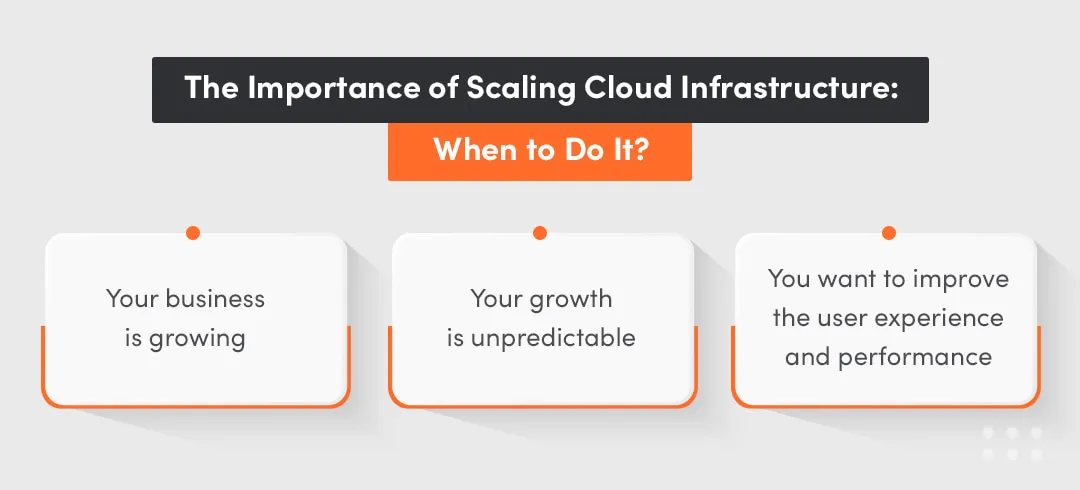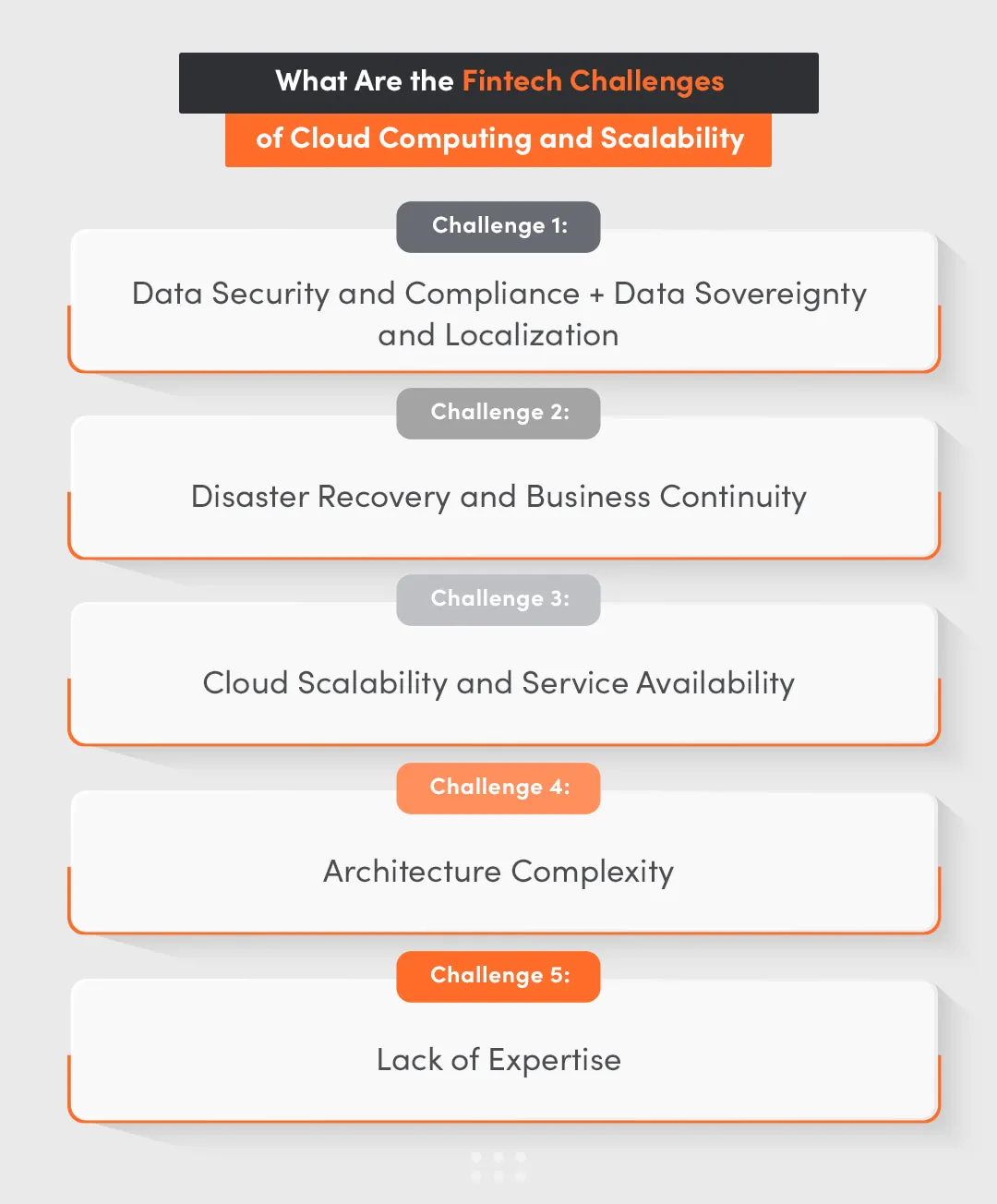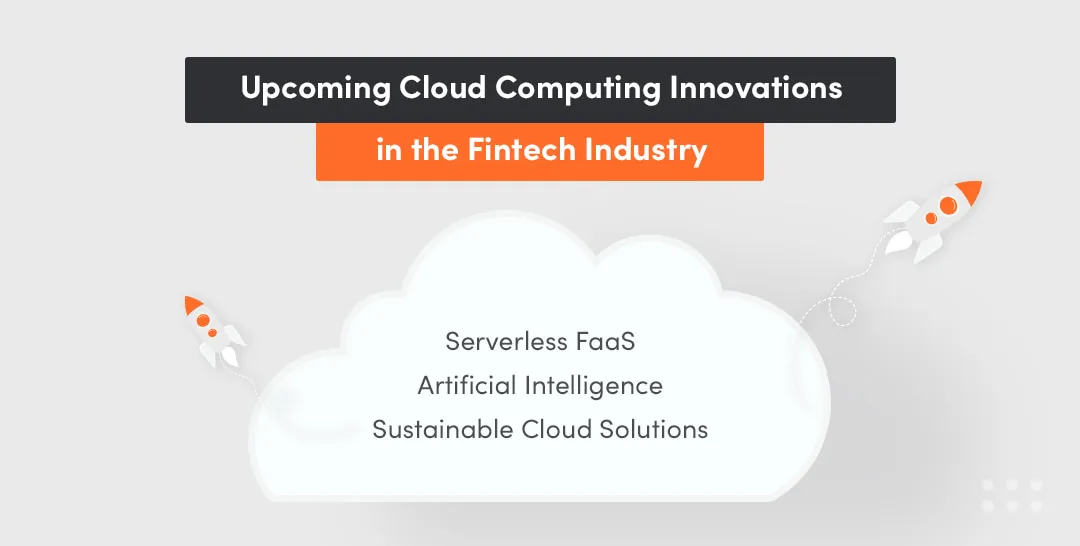According to recent reports, most organizations still need to learn how to leverage the cloud to get ahead of the competition and boost their businesses. In fact, more than 70% of them fail to drive customer value despite the cloud infrastructure they have in place.
Operating in the cloud without a defined strategy can lead to various challenges for fintech companies looking to scale their infrastructure.
However, there's a big gap between simply adopting the cloud and leveraging it to achieve organizational success. While cloud adoption is a game-changer, the study reveals that a surprising 69% of business leaders still struggle with how to effectively implement cloud computing as a strategic asset. This means they are missing out on opportunities to speed up business results and get ahead of their competition.
What will you learn from this article:
- Why is scaling your cloud infrastructure important?
- When is the right time to scale your cloud infrastructure?
- What are the types of scaling in cloud computing?
- What challenges do fintech businesses face when scaling their cloud infrastructure?
- How hard is it to integrate cloud services?
- What innovations can transform the fintech industry soon?
- When is the right time to consider scaling cloud infrastructure?
Expert Insights
- 94% of leaders have adopted cloud services.
- 69% of leaders struggle with effectively leveraging cloud computing as a strategic asset.
- The benefits of scaling cloud infrastructure include cost efficiency, data security, and improved collaboration.
- The right time to consider scaling your cloud infrastructure includes periods of business growth, fluctuating demand, and boosting user experience along with performance.
- Fintech firms must strictly comply with regulations like GDPR and CCPA.
- Fintech cloud computing trends focus on serverless computing, AI and machine learning, and sustainability through cloud optimization.
- To comply with local laws, fintech firms utilize cloud providers with regional data centers and architect applications to segment data geographically.
- Fintechs use redundancy and multi-region deployment for downtime risk reduction.
- Cloud system complexity can cause operational and reliability challenges.
- Cloud service integration in fintech involves both data and application integration for specific needs.
The Importance of Scaling Cloud Infrastructure: When to Do It?

Scalability in cloud computing refers to the process of increasing or decreasing IT resources to address the growing demand and to ensure smooth performance. Scaling cloud infrastructure is vital for businesses that want to stay ahead and quickly respond to market changes.
However, determining when exactly to scale and how can be difficult. There are three indicators when you should consider scaling:
- Your business is growing. If your team is unable to deliver solutions on time due to an increasing number of tasks and projects, it is a good sign to scale.
- Your growth is unpredictable. If your business experiences unpredictable spikes and dips in demand, elastic cloud computing solutions will help you accommodate the fluctuating workload.
- You want to improve the user experience and performance. By scaling, you can allocate resources better to improve loading and response times and reduce system failures, thus satisfying the users' demands better.
While scaling might be challenging and involves a lot of smaller processes, it is something you should consider if any of the above applies to your current business situation. The approach you choose will, of course, depend on your needs.
Try our developers.
Free for 2 weeks.
No risk. Just results. Get a feel for our process, speed, and quality — work with our developers for a trial sprint and see why global companies choose Selleo.
What Are the Types of Scaling in Cloud Environments?
In cloud computing, there are three main ways to scale your infrastructure: vertical, horizontal, and diagonal.
Vertical scaling
Vertical scaling, also referred to as "scaling up" or "scaling down" (depending on the direction), involves increasing or decreasing the resources of the cloud computing infrastructure. Most often, it is implemented when there is a need for more processing power or memory to handle the increased workload.
For example, retail websites might experience predictable traffic increases during holiday seasons. Vertically scaling their servers by adding more resources can help manage these peak loads efficiently without permanently investing in additional hardware that remains underutilized for the rest of the year.
Horizontal scaling
This type focuses on adding more servers to handle a more intensive workload, instead of upgrading the resources. This type of scaling is also commonly known as "scaling out." It is often used when there is a need for more fault tolerance, as in the event of one server failing, the system will continue to function properly thanks to other servers. It also improves the overall efficiency, as it allows for parallel processing.
For example, social media platforms like Facebook or X use horizontal scaling to manage the massive amounts of user data and traffic they receive. They distribute the load across thousands of servers to ensure smooth performance for millions of users worldwide.
Diagonal Scaling
Diagonal scaling (sometimes called "hybrid scaling") is a mix of vertical and horizontal scaling**.** It involves increasing the cloud infrastructure resources and adding more servers. Diagonal scaling is the best choice when there is a need for both increased cloud computing resources and additional server capacity.
For example, a video streaming service might use diagonal scaling to manage its workload. During regular hours, it could vertically scale its servers to handle normal traffic. However, when expecting a significant increase in viewers for a live event, it might horizontally add more servers to distribute the load, ensuring uninterrupted streaming for all viewers.
What Are the Fintech Challenges of Cloud Computing and Scalability?
As in any industry, businesses in the fintech sector encounter many challenges when implementing cloud computing and scaling their infrastructure. There is a greater likelihood of encountering difficulties with larger and more intricate infrastructures, but it does not mean small businesses are safe and should neglect the importance of addressing the cloud computing challenges.

Challenge 1: Data Security and Compliance + Data Sovereignty and Localization
The nature of the data fintech businesses work on is highly sensitive and regulated, data security and compliance have always been major cloud computing challenges. All fintech companies must ensure their sensitive data is securely stored and that access to it is tightly controlled.
Depending on the countries they operate in, fintech companies may also need to comply with specific regulations, like the Gramm-Leach-Bliley Act, or CCPA, in the US and GDPR in the EU. Fintech companies are required to abide by the local laws and regulations of the country in which their data is stored, as per data sovereignty rules.
Failure to comply with all these regulations can result in severe penalties (including financial ones) and damage to the reputation of the company.
Fintech businesses can work with their cloud providers to ensure data localization, which involves storing data from the cloud accounts within the borders of the country of origin to comply with data sovereignty laws. Additionally, implementing robust cloud infrastructure security measures such as advanced encryption, multi-factor authentication, and regular cloud security audits can further enhance data protection and reduce security risks.
Challenge 2: Disaster Recovery and Business Continuity
In case of a technical issue, a cybersecurity breach, or other security risks, Fintech businesses should have a comprehensive disaster recovery plan in place. This includes regular data backups, safeguarding cloud accounts, preventing data security risks, and having clear protocols for restoring operations promptly. When operating in a cloud environment, it is crucial for fintech businesses to only work with a cloud provider that offers highly secure and reliable disaster recovery solutions.
Cloud infrastructure, in general, provides some security and assurance that on-premises systems may not be able to match. Cloud scalability makes it an ideal choice for fintech businesses, as they can easily adjust their resources based on demand, allowing for higher availability.
Both horizontal and vertical scaling of cloud environments can prevent certain bottlenecks and ensure that the system continues working despite any disasters.
A business continuity plan for cloud-based businesses should cover scenarios for losses caused by the cloud service provider such as data breaches or system failures, as well as third-party losses and even natural disasters, to minimize any possible downtime and ensure uninterrupted operations.
Challenge 3: Cloud Scalability and Service Availability
Fintech applications must handle peak loads efficiently, ensuring low latency and high performance even during times of high demand. This requires scalable infrastructure that can dynamically adjust resources based on real-time demand.
Leveraging cloud services that offer auto-scaling and load balancing helps fintech companies manage fluctuating workloads.
Implementing a microservices architecture can also provide the flexibility to scale parts of an application independently, based on demand.
Challenge 4: Architecture Complexity
Companies may face difficulties in ensuring seamless communication and data transfer between different cloud platforms if they are not integrated properly, generating potential data inconsistencies, delays in business processes, and, in turn, financial losses.
Integrating different systems and managing a number of cloud applications is time-consuming and can be challenging if the company does not have the cloud computing expertise or resources to effectively handle these tasks. Depending on the size and complexity of the company's operations, it may be necessary to hire cloud professionals to manage all the resources without disruptions, especially in complex multi-cloud environments.
To tackle this complexity, a thorough examination of data, services, workloads, and platforms is necessary. Automation and abstraction are crucial to this process.
Adopting a well-structured approach to cloud architecture, such as using serverless computing, containers, and microservices, can also reduce complexity.
Challenge 5: Lack of Expertise
Human errors are also one of the biggest causes of cloud data breaches - If your in-house IT specialists are not properly trained in scaling cloud infrastructure, their attempts to do so may be disastrous. Improperly set up cloud environments can lead to unexpected costs, increase the risk of malfunction, and hinder performance.
Investing in training and development programs for existing staff can build in-house expertise. Additionally, partnering with cloud service providers that offer strong technical support and consulting services can bridge the knowledge gap.
Integrating Cloud Services: Is It Easy?
Combining your multiple cloud ecosystems and services into one, smooth platform can be a complicated process. There are two types of cloud integration that you can choose for your infrastructure, depending on your needs and requirements.
Data Integration
Data integration is a type of cloud integration in which data from various sources is consolidated and synchronized in the cloud. This process involves mapping and converting data from different systems and has to be done carefully to ensure the integrity as well as consistency of the data.
There are different ways to simplify consolidating and synchronizing data in the cloud, such as using Extract, Transform, and Load (ETL) tools. The process can be automated to increase efficiency and reduce manual errors. How smoothly it goes depends on the expertise and skill of the people performing the integration, too.

Application Integration
This process links different cloud applications to work together and share data seamlessly. Having one, simplified platform for all the software the business uses can be highly beneficial, both financially and in terms of efficiency. It can also be used to connect on-premises systems with cloud apps, making it even easier for organizations to integrate processes and functions from the different applications they use.
Businesses can choose from several options based on their resources and strategy. They might opt for custom-built point-to-point integration, utilize open-source solutions and adopt best practices from developer communities, or leverage the application's APIs or Web Services if they have the internal capability to do so.
Upcoming Cloud Computing Innovations in the Fintech Industry

The fintech industry is undergoing a big transformation, with cloud computing leading the way. This revolution is not just about migrating to the cloud but harnessing its full potential through innovative trends. There are a few cloud trends that seem to be here to stay:
Serverless FaaS
Functions-as-a-service, also known as FaaS, is gaining popularity in the fintech industry. FaaS allows businesses to operate in the cloud environment without having to worry about managing the underlying infrastructure because the cloud service providers take care of the technical aspects. This allows fintech companies to focus more on their fundamental competencies and deliver better solutions to customers. It is highly cost-efficient, as businesses only need to pay for the resources they consume, with the cloud scalability on demand being another key benefit.
Artificial Intelligence
AI and machine learning have a great effect on fintech and can bring significant advancements in the industry. Deep learning techniques can be applied to analyze large amounts of financial data, enabling businesses to make more accurate predictions and detect patterns that would go unnoticed by the human eye. When used by qualified professionals who possess critical thinking and problem-solving skills, AI algorithms can be used for a wide range of tasks such as risk assessment, fraud detection, personalization suggestions, and automated services.
Sustainable Cloud Solutions
Cloud sustainability is another trend that affects the financial tech sector. With the increasing demand for digital services, cloud computing allows for a decreased carbon footprint and waste than traditional financial operations. Sustainable transactions done via digital wallets and cloud technology solutions help reduce the need for physical currency and paper receipts, thereby minimizing the environmental impact.
Conclusion
Scaling a cloud infrastructure and properly integrating cloud services in the fintech industry can lead to seamless, cost-effective, and sustainable financial operations. It can solve many cloud computing challenges and increase operational efficiency, too.
While there are many challenges related to scaling and integrating cloud services in fintech operations, such as data security, disaster recovery, and technical expertise concerns, all of them can be addressed through proper planning, collaboration with credible cloud service providers, and the implementation of robust, reliable cloud platforms.
Being able to scale up or down as needed gives businesses freedom and flexibility to adapt to changing demands and avoid overprovisioning resources.
Cloud infrastructure reduces financial burdens for businesses by charging only for resources used while also being environmentally friendly by reducing the need for physical hardware and energy consumption.





